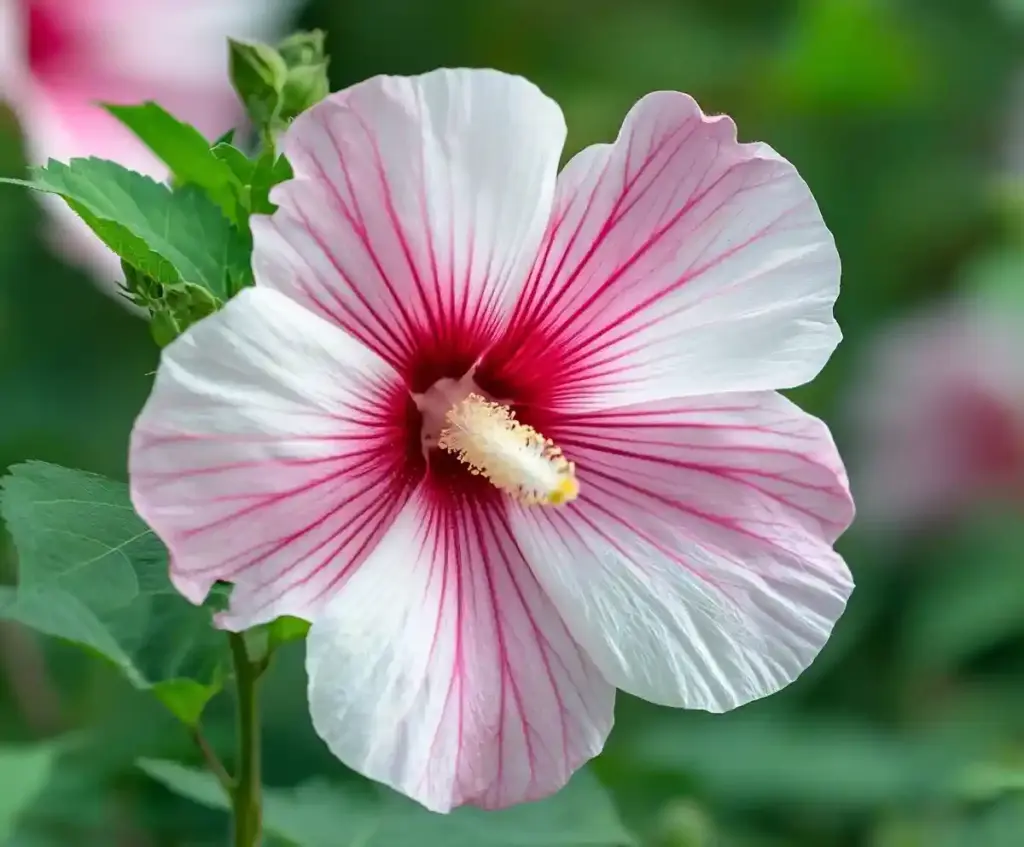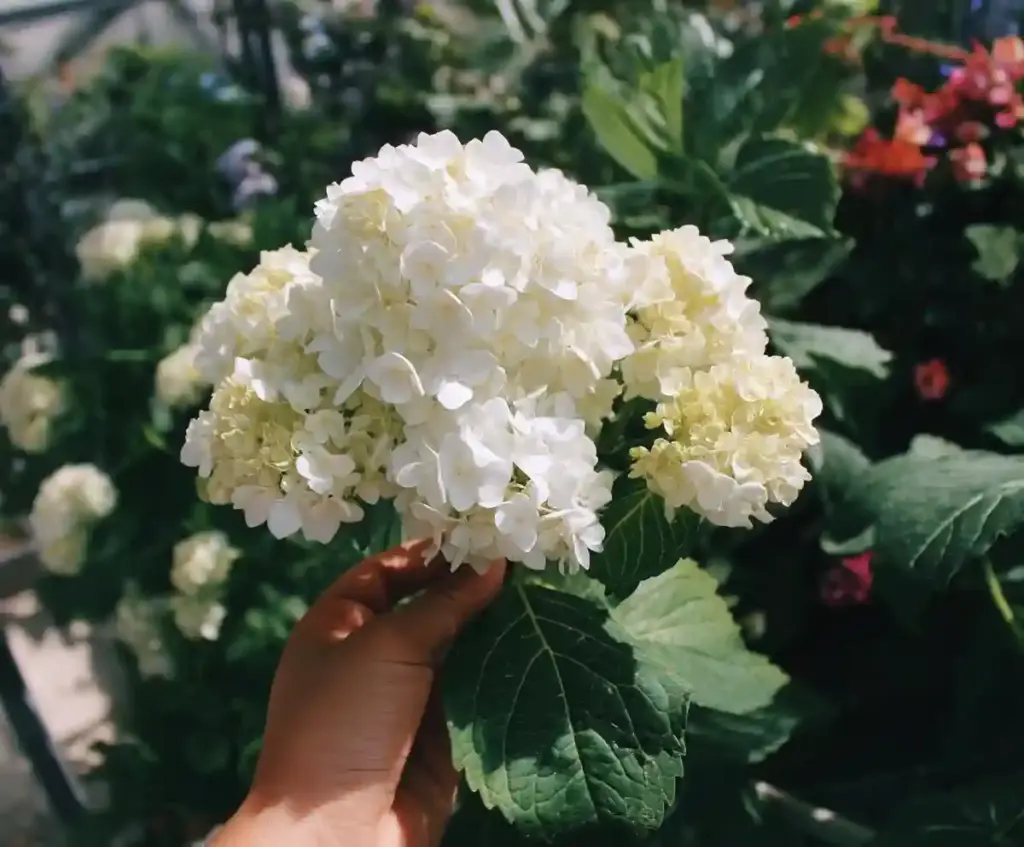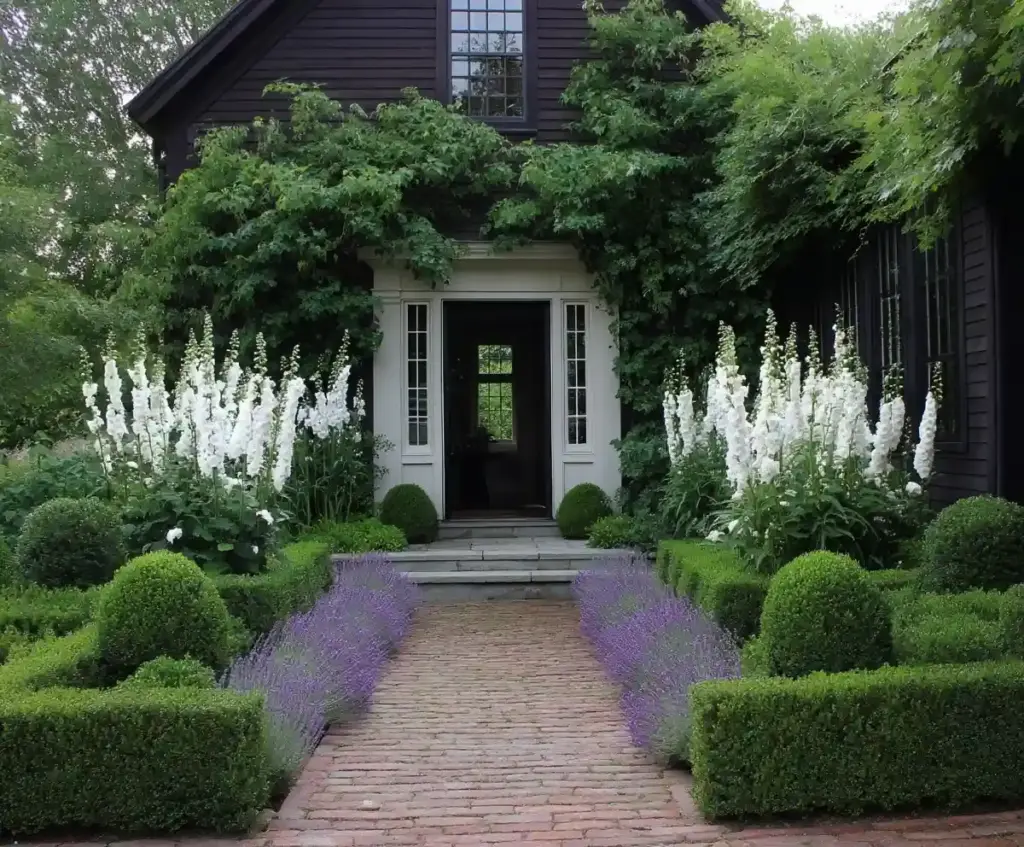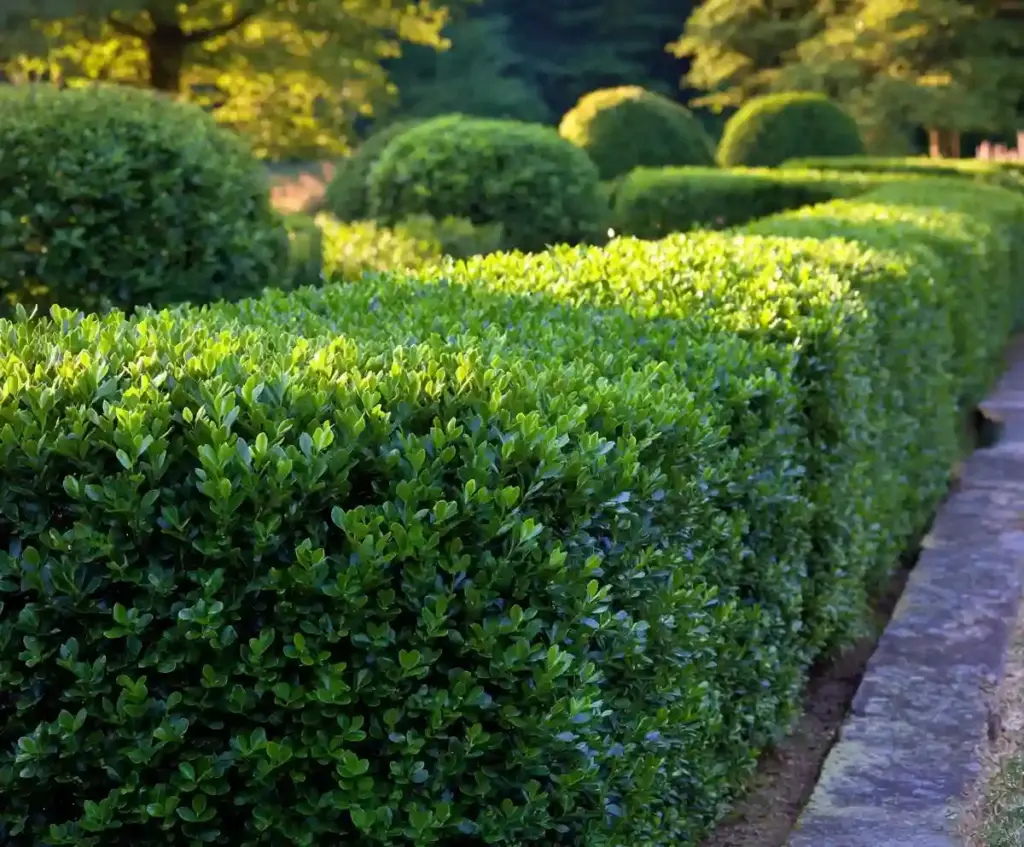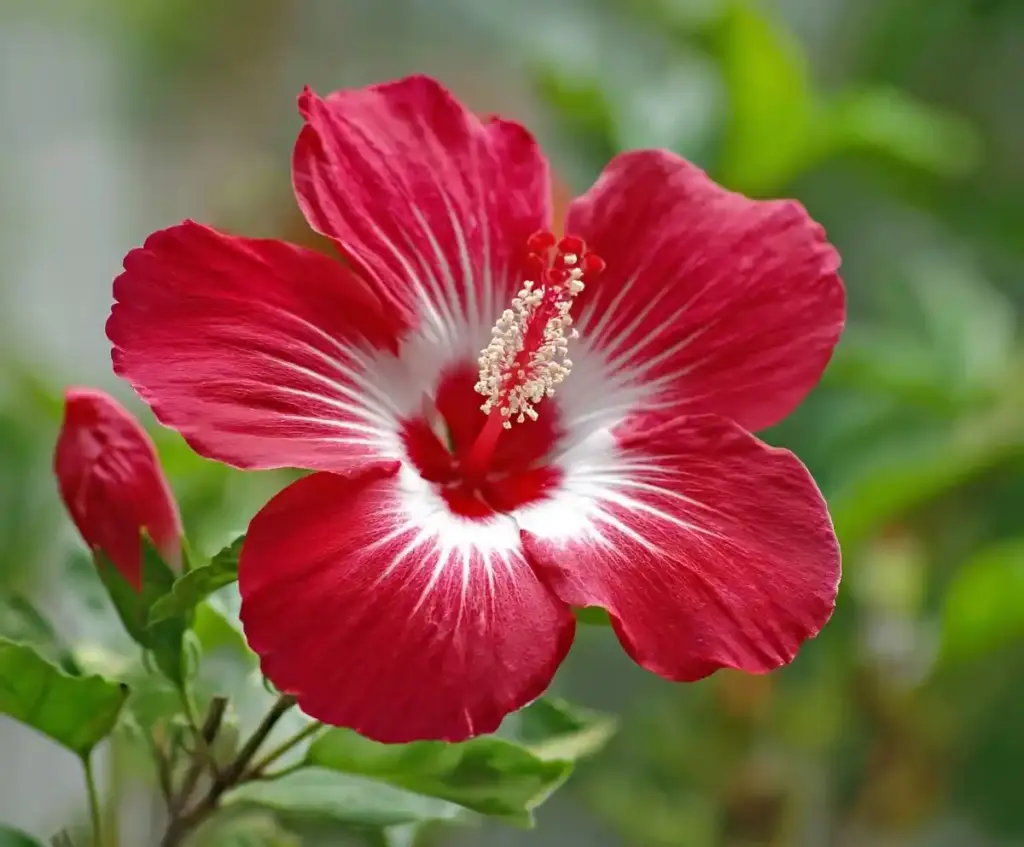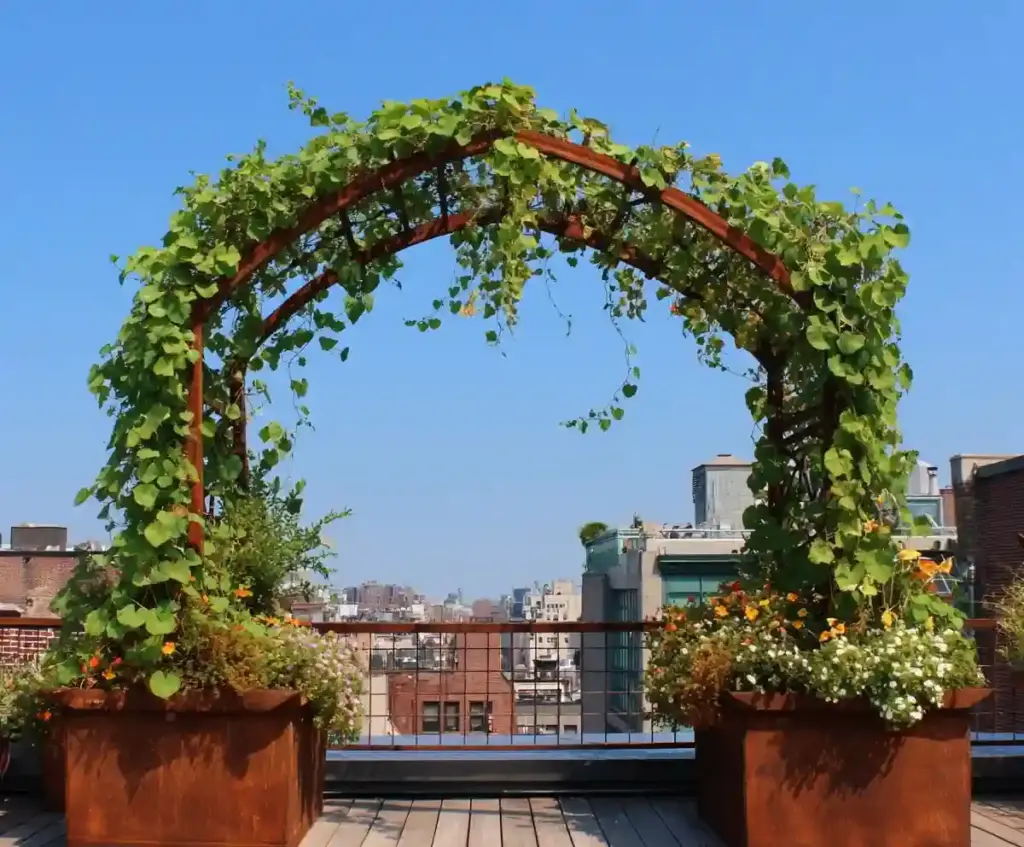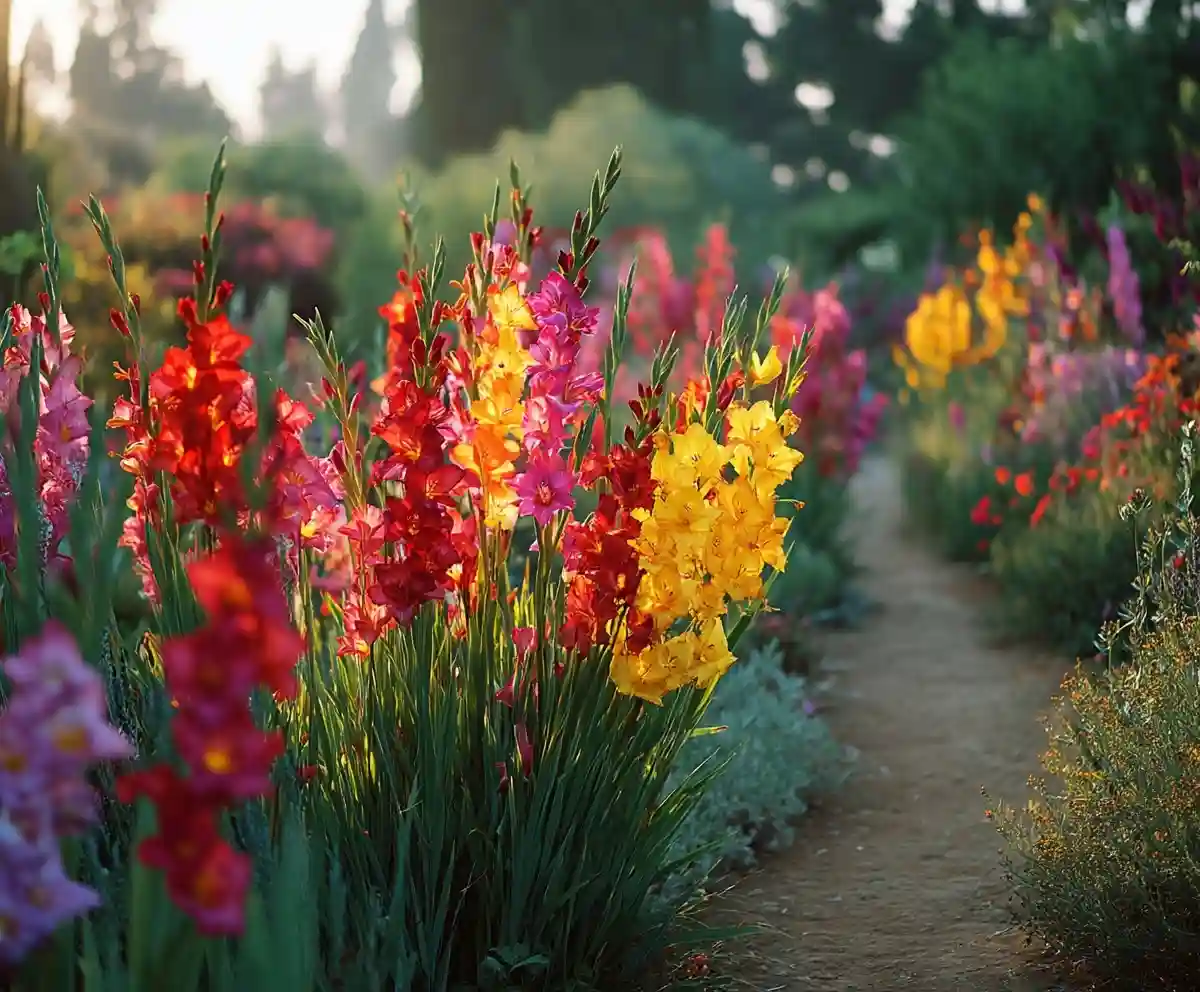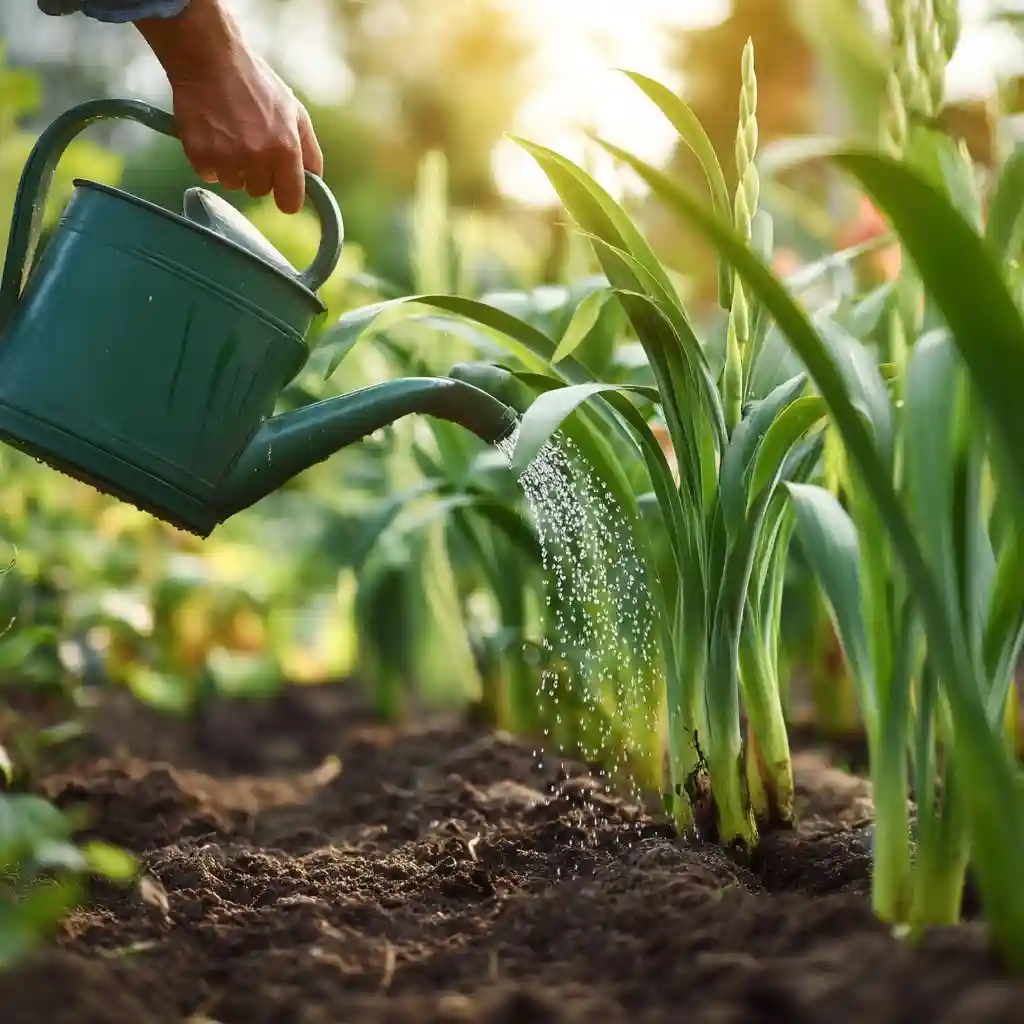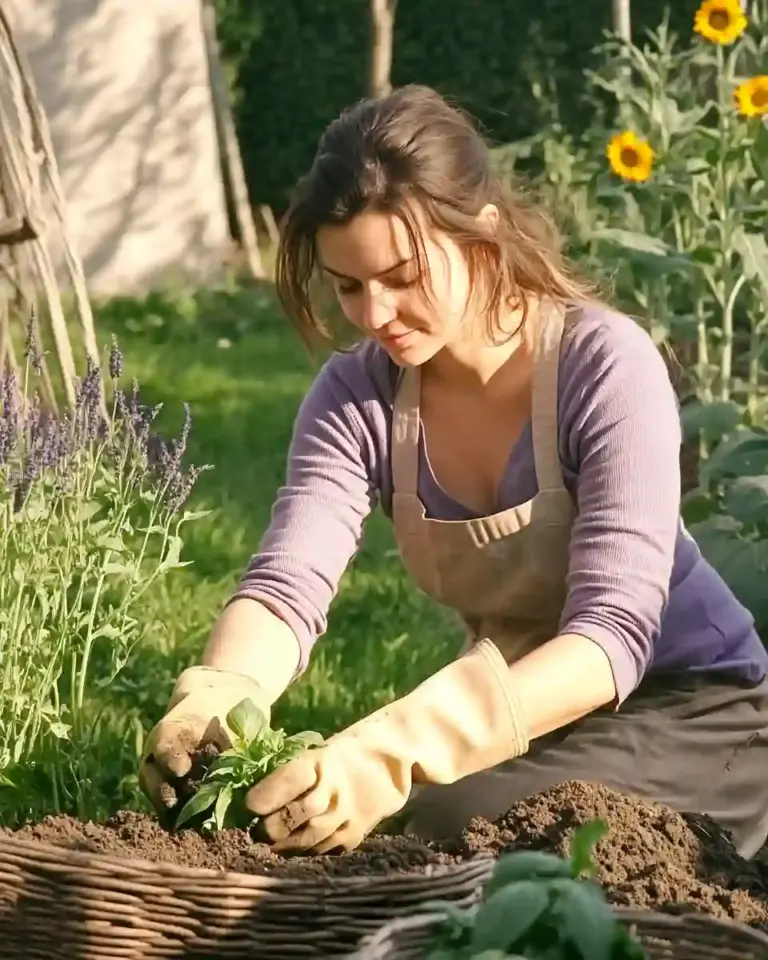To grow gladiolus flowers successfully, all you need is a bit of planning and the right environment. These elegant, sword-shaped blooms are a favorite among gardeners for their dramatic height, vibrant colors, and ease of cultivation. Whether you’re a beginner looking to brighten your flower beds or an experienced grower aiming to expand your summer display, gladiolus are a rewarding choice.
With hundreds of varieties and a wide range of hues—from pastel pinks to fiery reds—gladiolus offer a long-lasting visual impact in any garden. Plus, they make excellent cut flowers. Let’s walk through the essentials of how to plant, nurture, and care for gladiolus flowers so they thrive from spring to fall.
Table of Contents
Plant Care
Once you plant gladiolus corms in the spring, maintaining them is surprisingly simple. These blooms require basic care but deliver bold beauty all season long.
Watering
Gladiolus need consistent moisture during their growing period. Aim to keep the soil lightly moist but not soggy. Overwatering can lead to rot, while underwatering may stunt the growth and flower production. Water deeply once or twice a week depending on rainfall and temperature, especially during dry spells.
Fertilizing
To help your gladiolus thrive, use a balanced 10-10-10 fertilizer when planting. You can feed them again when the flower spikes appear, which supports strong stems and vibrant blooms. Avoid high-nitrogen fertilizers, which promote foliage growth at the expense of flowers.
Deadheading and Cutting Flowers
If you’re growing gladiolus for bouquets, cut the flower spikes early in the morning or late in the day—never during peak sun. Select stems where only the lower few buds have opened. Always leave at least four leaves on the plant to allow the corm to store energy for next year.
Seasonal Maintenance
After the blooming season, reduce watering gradually and allow the foliage to yellow and die back naturally. This ensures the plant directs energy back into the corm. In colder regions, dig up the corms before the first hard frost and store them in a cool, dry place for the winter.
Proper care helps you grow gladiolus flowers year after year with stronger stems and brighter blooms.
Best Growing Conditions for Gladiolus
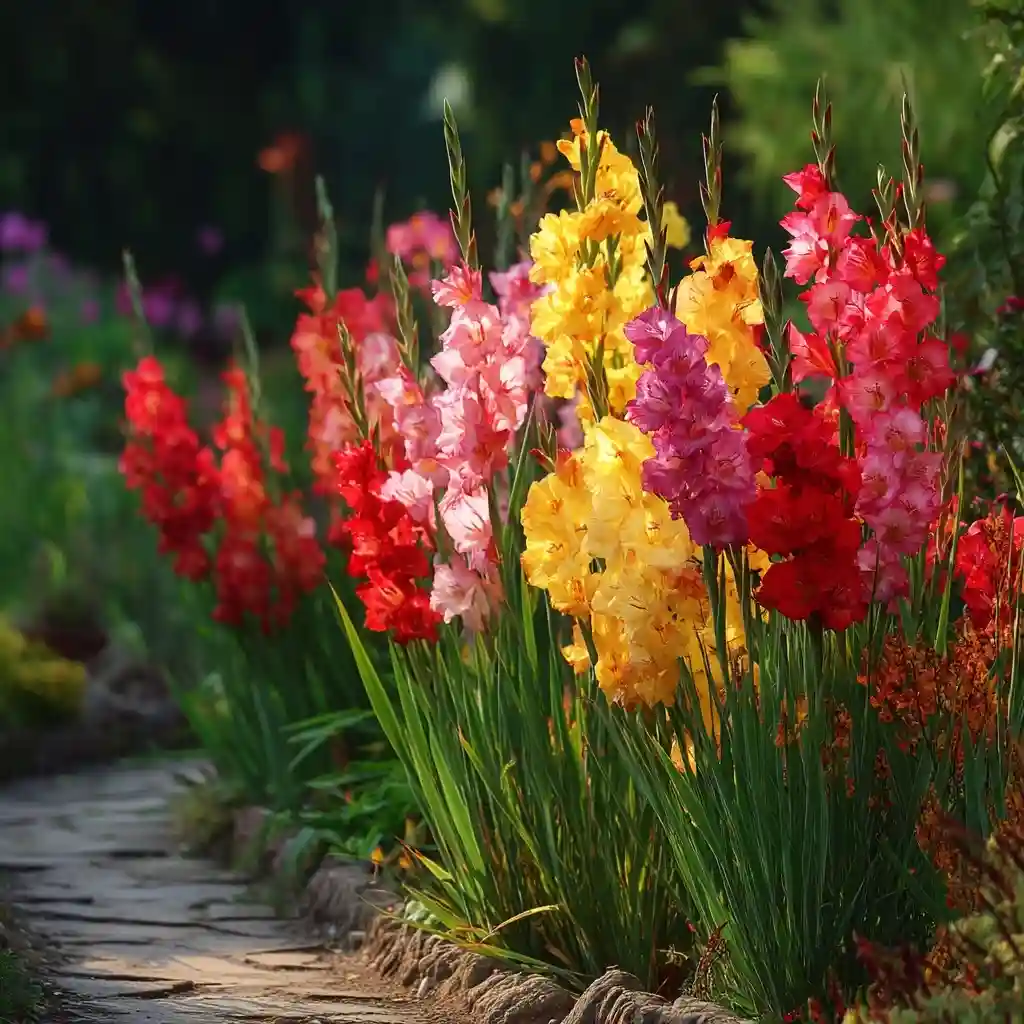
To grow gladiolus flowers successfully, location and soil quality are key. These plants aren’t fussy, but giving them optimal conditions ensures bigger, better blooms.
Sunlight
Gladiolus thrive in full sun, which means at least 6–8 hours of direct sunlight each day. In partial shade, the plants may grow tall and floppy with fewer flowers. Choose the sunniest spot in your garden for the strongest, most colorful spikes.
Soil
Well-drained soil is critical. Gladiolus grow from corms, which are prone to rot if left in overly wet conditions. Sandy loam is ideal, but if you have heavy clay soil, amend it with compost or peat moss to improve drainage and texture. A slightly acidic to neutral pH (around 6.0 to 6.5) is best.
Spacing and Depth
Plant corms about 2 to 6 inches deep depending on size—the larger the corm, the deeper it should go. Space them 6 to 10 inches apart in groups or rows. Planting in clusters of 7–10 gives a more natural, showy effect than lining them up individually.
Staggered Planting for Extended Blooms
To enjoy blooms all summer, stagger your plantings. Begin two weeks before your last expected frost and continue planting new corms every two weeks until early summer. This technique ensures a continuous display through late summer and into early fall.
Creating the right environment not only helps care for gladiolus flowers but also makes them more resilient to pests and diseases.
Types of Gladiolus
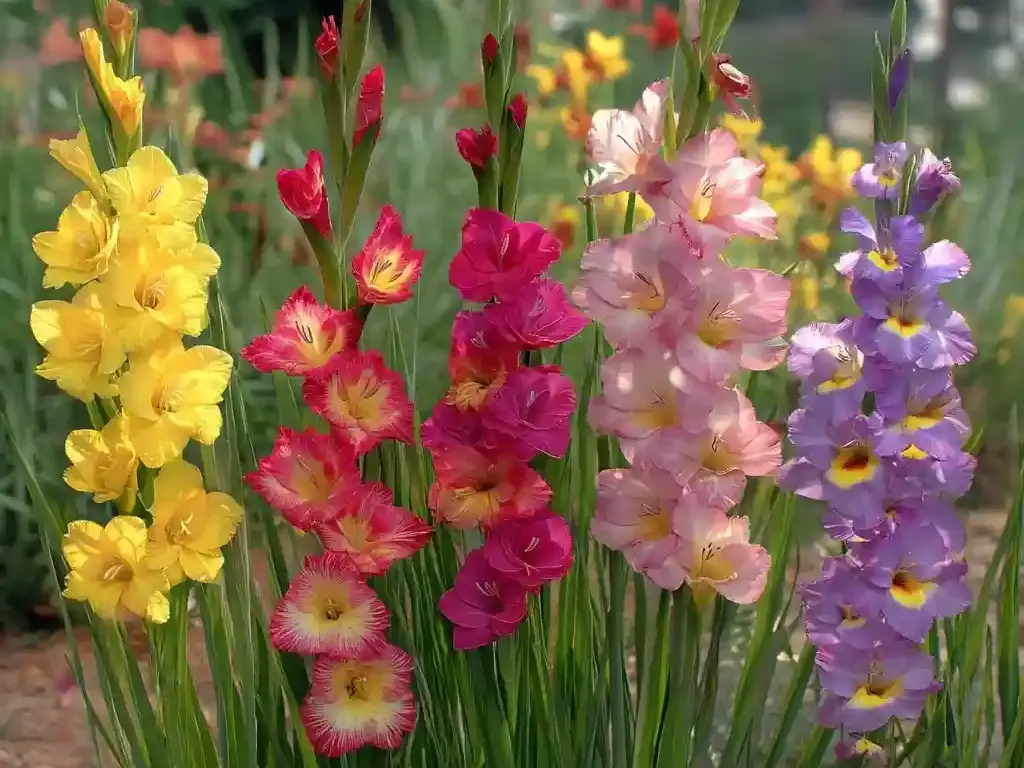
When planning to grow gladiolus flowers, it’s helpful to understand the different types available. Gladiolus come in a variety of sizes, shapes, and hardiness levels, making them suitable for a range of gardens and climates.
Grandiflora Hybrids
These are the most popular and recognizable gladiolus varieties. They feature tall flower spikes with large, dramatic blooms that can reach up to 5 inches across. Grandifloras often grow up to 4 feet tall and may need staking to keep them upright in windy conditions. They’re ideal for borders and cutting gardens.
Dwarf Grandiflora Hybrids
Shorter and more compact, dwarf grandifloras are a great choice for container planting or smaller spaces. They offer the same vibrant colors and flower shape as their taller cousins but typically max out around 2 feet tall. These varieties are hardy to Zone 7, making them suitable for milder climates.
Nanus Hybrids
Nanus types are known for their graceful appearance and early bloom times. While they produce fewer flowers per spike, their compact height (typically under 2 feet) and hardiness to Zone 5 make them ideal for colder regions. They’re perfect for rock gardens or mixed perennial beds.
Choosing the right type of gladiolus helps you care for gladiolus flowers more effectively by aligning your planting strategy with your climate and garden design.
How to Propagate Gladiolus
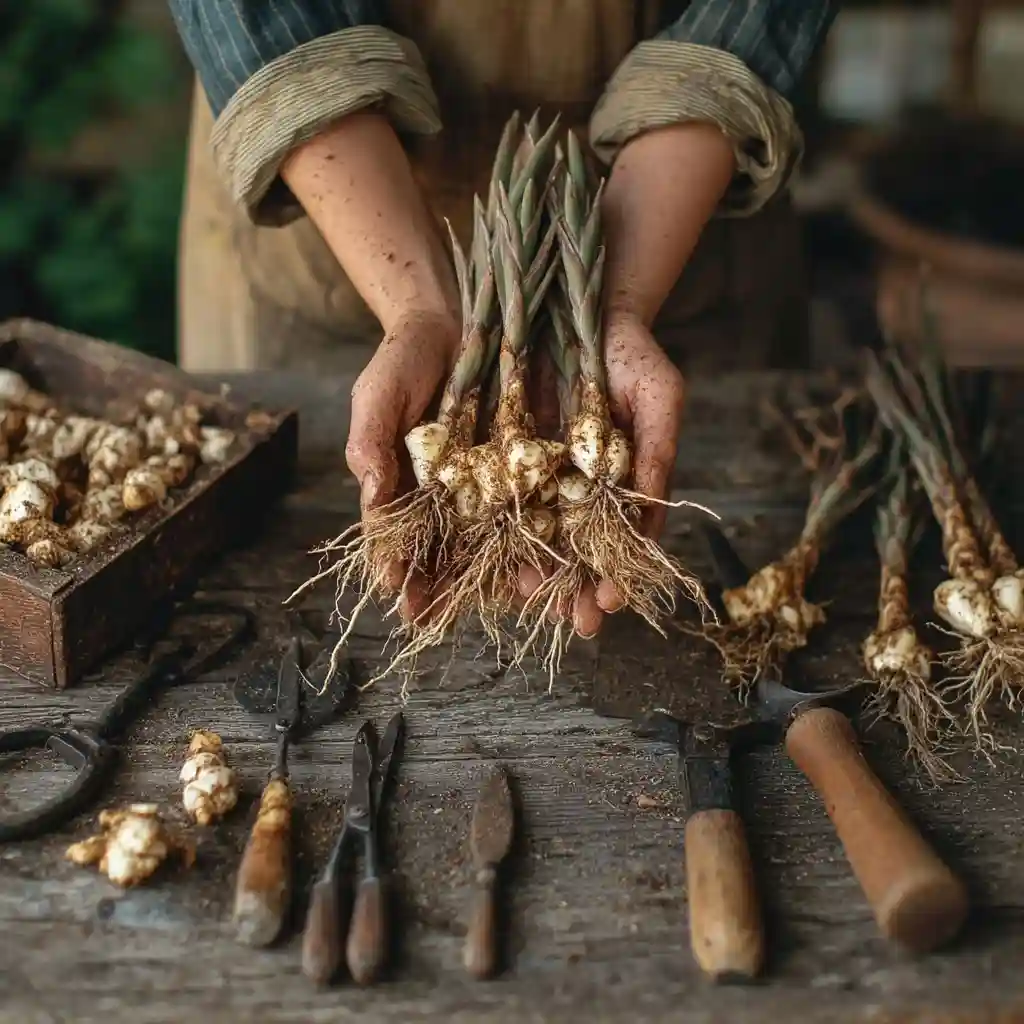
If you want to expand your collection or preserve favorite varieties, learning how to propagate is a key part of knowing how to care for gladiolus flowers. Fortunately, gladiolus are easy to multiply using the corms they grow from.
Propagation by Corm Division
Gladiolus reproduce through cormels, which are small baby bulbs that form around the base of the main corm. You’ll notice these tiny offshoots when you dig up the plant in the fall.
Here’s how to divide and store them:
- Wait for fall: Once the foliage yellows and dies back, dig up the entire plant before the first hard frost.
- Clean and dry: Gently remove soil from the corms and allow them to dry in a warm, well-ventilated space for 2–3 weeks.
- Separate cormels: Peel off the small cormels from the base of the mother corm. Discard any damaged or mushy bulbs.
- Dust for protection: Coat the corms and cormels with a fungicide (bulb dust) to prevent rot.
- Store properly: Place them in paper or mesh bags in a cool, dry, and dark spot above freezing—like a garage or basement.
Planting Cormels
Replant cormels in spring just like mature corms. They usually take 2–3 years to reach full blooming size, but they’re a reliable and cost-effective way to grow more gladiolus flowers over time.
By propagating successfully, you ensure a steady supply of strong, healthy plants and preserve your favorite colors and shapes for years to come.
Common Problems With Gladiolus
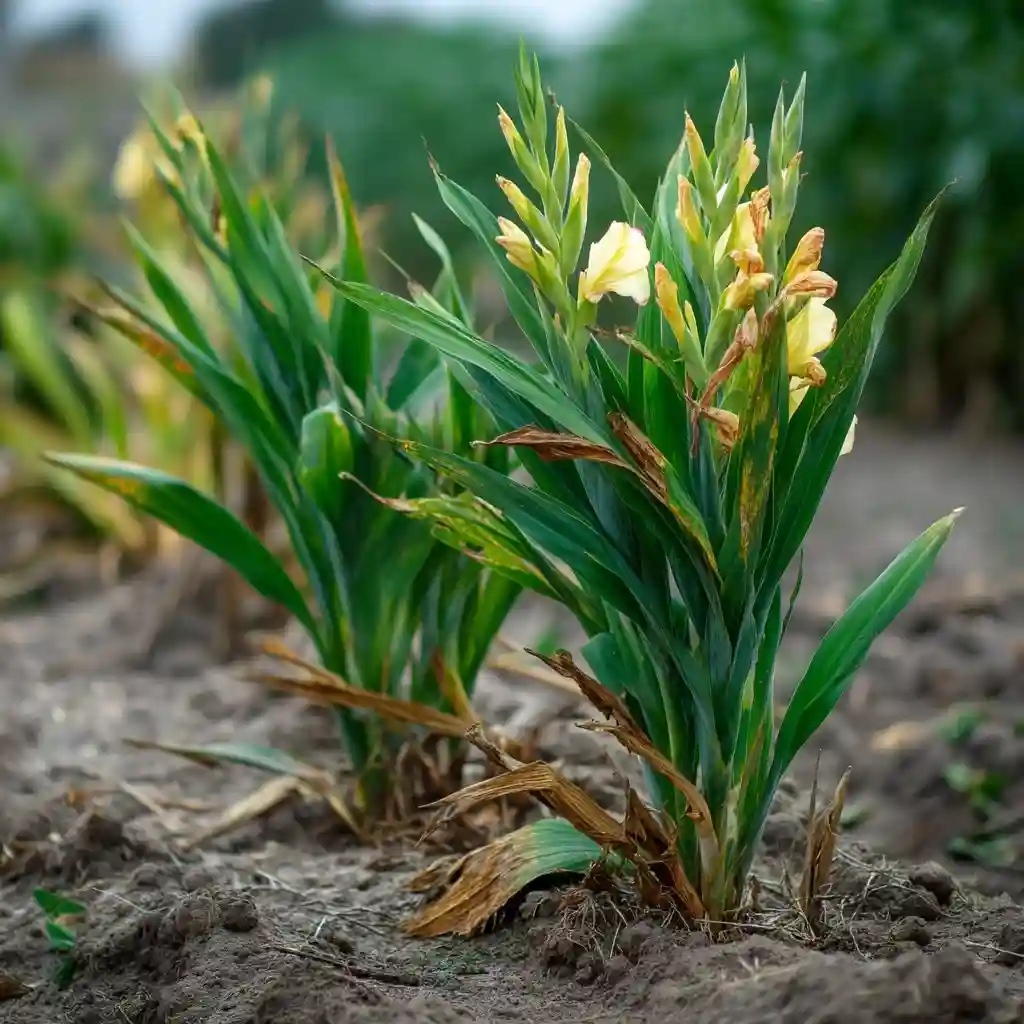
Even though it’s relatively easy to grow gladiolus flowers, there are a few problems gardeners might encounter. Being aware of these common issues can help you take action early and keep your plants healthy.
Poor Drainage and Rot
The most frequent problem is corm rot, caused by planting in overly wet or poorly drained soil. Always choose a site with good drainage and avoid watering too heavily. If corms sit in soggy ground, they may develop mold, soft spots, or fail to sprout.
Cold Damage
Gladiolus are not fully hardy in colder zones (Zones 6 and below). Leaving corms in the ground over winter can result in frost damage. In these climates, dig up the corms after the first frost, dry them thoroughly, and store them indoors until spring.
Pests
- Thrips are tiny insects that suck sap from buds and flowers, causing discolored or deformed blooms. Use neem oil or insecticidal soap if you notice damage.
- Rodents, like squirrels and voles, may dig up or eat corms, especially in winter storage. Use wire mesh or plant in containers if you suspect activity.
Flower Failure
If your gladiolus don’t bloom, possible causes include:
- Planting too shallow
- Excess nitrogen fertilizer
- Not enough sunlight
- Using small or unhealthy corms
Choosing large, healthy corms and following correct spacing, sunlight, and feeding guidelines is key to caring for gladiolus flowers and getting reliable blooms.
Conclusion
When you grow gladiolus flowers, you’re adding more than just color—you’re creating a dynamic vertical element in your garden that lasts all summer. These easy-to-care-for plants reward you with tall, showy blooms and are just as stunning in the ground as they are in a vase.
With the right sunlight, well-drained soil, and a little seasonal maintenance, gladiolus are a low-effort way to enjoy brilliant color in any garden bed or container. Whether you’re propagating from saved corms or trying new hybrids, a bit of planning will ensure success year after year.
With proper planting and care, your gladiolus will become a dependable highlight in your flower garden—elegant, vibrant, and always eye-catching.
FAQs
Is it easy to grow gladiolus flowers?
Yes, gladiolus are beginner-friendly. Once planted in the spring, they require minimal maintenance and reward you with striking, colorful blooms throughout the summer.
How long do gladiolus take to bloom after planting?
Most gladiolus varieties bloom about 70 to 90 days after planting. Staggered planting every two weeks ensures continuous flowers into early fall.
Can you grow gladiolus flowers indoors?
Yes, gladiolus can be grown indoors in containers. Choose a deep pot with good drainage and place it in a bright, sunny window that gets at least 8 hours of sunlight daily.
Do gladiolus flowers return every year?
In warmer zones (Zone 7 and up), corms can stay in the ground and regrow the following year. In colder areas, dig them up and store them indoors to replant each spring.
What should I do if my gladiolus don’t bloom?
Check for adequate sunlight, avoid high-nitrogen fertilizers, and ensure corms are planted deep enough. Also, make sure you’re using healthy, full-size corms.
🌿 Love gardening inspiration? Follow me on Pinterest for bold plant ideas, tips, and seasonal color!
More Posts
